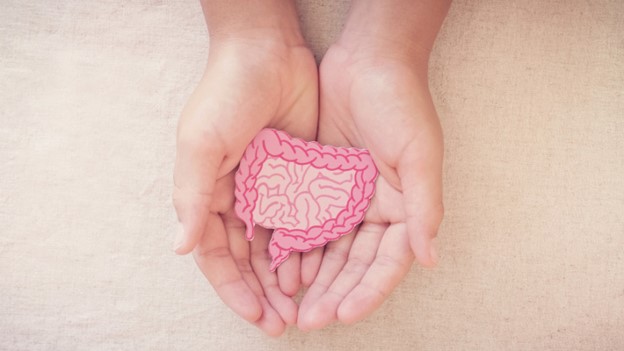Diabetes mellitus is defined as a disorder that affects the body using glucose (blood sugar). Diabetes is spreading rapidly across the globe. The World Health Organization (WHO) says that 6% of the world’s population, or more than 420 million people, today have diabetes. Diabetes death rates increased by 3% between 2000 and 2019.
The human gut Microbiota is the name for the trillions of tiny organisms, like bacteria, that live in a person’s gut. The Microbiota in the gut is an essential cause of diabetes, as they affect the host’s metabolism and obesity. This blog will delve into the intricate relationship between diabetes and gut microbiota. Additionally, medication like Rybelsus 14 mg treats diabetes frequently and effectively.
Understanding Diabetes
Diabetes mellitus impacts how the body uses blood sugar. The cells that form the muscles and tissues depend highly on glucose or blood sugar as an energy source. This imbalance of blood sugar levels is due to the deficiency of a hormone “Insulin”.
How insulin works: It is a hormone produced by the pancreatic gland that’s located behind the stomach. Glucose is used for energy by your body when you have insulin.
When you have too much glucose in your bloodstream, insulin tells your liver to store it. The stored glucose is released when your blood glucose levels drop. Blood glucose levels can drop while you’re hungry, stressed, or need extra energy.
What is Gut Microbiota?
The gut microbiota is a complex and evolving group of microorganisms that live in the human gastrointestinal (GI) system. In homeostasis and disease, these microorganisms play an essential role. Homeostasis is the state where living things maintain their internal, physical, and chemical conditions.
[The Gastrointestinal, or GI tract is extended from the mouth to the anus in the digestive system. Various other names include the digestive tract, alimentary canal, or digestive tract].
As per the National Library of Medicine, or NLM, more than 1014 bacteria are estimated to live in the GI tract. There are approximately ~10 times as many bacteria in the microbiome as in the human genome. Thus the microbiome has more than 100 times more genetic units than the human genome.
[Microbiome is a community or group of microorganisms living together in a habitat.]
Relation Between Diabetes and Gut Microbiota
The gut microbiota is significant in obesity and metabolic dysfunction or disorders. The gut bacteria affect the host’s metabolism, the amount of food they eat, their body weight, and how well their glucose and lipids (fatty acids) work.
The five phyla (phylum or group) Actinobacteria, Proteobacteria, Bacteroidetes, Firmicutes, and Verrucomicrobia comprise most human gut microbiota. Firmicutes and bacteroidetes are the most abundant, i.e., almost 90%. The rest 10% of gut microbiota is Actinobacteria, proteobacteria, and verrucomicrobia.
Physiological Functions of These Phyla
The main physiological functions of firmicutes and bacteroidetes in humans include defense against infections and the production of vitamins B, K and bile acids. They also play a crucial part in regulating host metabolism and immunological response.
[Bile acid is a viscous, yellow-green digestive fluid produced by the liver].
When hosts are obese or eating high-calorie meals, the ratio of Firmicutes to Bacteroidetes increases. Obesity rates rise, and glucose metabolism is hindered due to the changed balance of these two primary phyla. When there is a decrease in Firmicutes and an increase in Bacteroidetes, the weight of the host is reduced.
Dysbiosis is an imbalance of bacteria in the intestines, and it is linked with T2DM. By modifying the intestinal microbiome can also help prevent diabetes and lessen the worldwide burden of chronic diseases.
Here are the Microbiota influencing therapies for type 2 diabetes treatment:
Healthy Diet and Physical Exercise
Diet is a critical element that encourages the makeup of the gut microbiota. According to the NLM, dietary changes account for 57% of the variation in gut microbiota composition, whereas host genetic mutations only account for 12%.
Diets composed of high sugar and cholesterol raise the chance of developing diabetes. These diets result in gut dysbiosis, which promotes the onset of diabetes. A high-fiber diet is a well-known healthy diet with many benefits, such as:
- Better bowel movements
- Lowering cholesterol
- Maintaining a healthy weight
- Managing blood sugar levels.
Exercise directly impacts gut microbiota by controlling gut physiology and morphology (form or structure). The intestinal transit time (time taken by food to pass through the intestine) is shortened by low-intensity exercise, while sustained activity can make the gut more permeable.
Probiotics
Probiotics are living microorganisms that are found in certain foods and supplements. They maintain or enhance the body’s normal microflora (Microbiota) or “good” bacteria. Enhance their host’s health, especially the digestive tract. Probiotics are being considered cutting-edge and prospective biotherapeutics for treating and controlling diabetes at the moment.
An essential factor in the emergence of diabetes and the difficulties associated with it is oxidative stress. Probiotic supplementation is advantageous for people with diabetes since these supplements reduce the body’s oxidative stress.
[Oxidative stress is an inequality between the body’s antioxidant defenses and the formation of free radicals (unstable atoms), which can potentially damage your cells].
Antidiabetic medications
Antidiabetic medications are intended to treat diabetes mellitus. The gut microbiota and anti-diabetes medicines are mutually dependent, so while diabetic medications change the gut microbiota, the gut microbiota also affects how well diabetic medication works.
Additionally, several medicines are available at the best Canadian online pharmacyto treat diabetes. It is very important that you seek the help of healthcare professionals so that you can receive treatment that is personalized to your needs.
Conclusions
To summarize, diabetes and gut Microbiota are intricately linked. Based on this relationship, it is evident that these microorganisms play a crucial role in metabolic health. The rise of diabetes globally underscores its significance. Diet, body weight, glucose regulation, and immune response are all influenced by gut microbiota.
The ratio of Firmicutes and Bacteroidetes is linked to obesity and glucose metabolism. Bidirectional relationships also exist between antidiabetic medications, and gut microbiota and type 2 diabetes which explains the potential for innovative treatment options.
Here’s the thing: living with chronic pain is tough enough without adding mental health struggles into the mix. So start making these small changes today—your mind will thank you!
Read Also
- Exploring the Benefits of Infusion Therapy in OKC: The Ultimate GuideUnderstanding Infusion Therapy: A Deep Dive into Its Purpose and Process What exactly is Infusion Therapy? Infusion therapy is an advanced medical treatment that delivers medication and nutrients directly into the bloodstream through a vein, typically via an IV (intravenous) line. This method is particularly beneficial for patients who require a concentrated dose of medication,… Read more: Exploring the Benefits of Infusion Therapy in OKC: The Ultimate Guide
- Ketamine-Assisted Therapies: Impacts on Employee WellbeingWorkplace stress is common today. Many employees feel tired, anxious, or burned out. Regular therapy can help, but some people need more support. Ketamine-assisted therapy is showing good results for mental health. A ketamine-assisted therapist guides each session safely. This therapy can improve mood, focus, and energy. Learning more about it can help teams stay… Read more: Ketamine-Assisted Therapies: Impacts on Employee Wellbeing
- The Future of Men’s Health: Why Telehealth Is Here to StayTelehealth isn’t just a pandemic trend that faded into the background. For Australian men, it has become one of the most practical, time-saving, and stress-free ways to manage everyday health — and it’s shaping the future of how we access care. Platforms like DOCTO, an Australian online doctor and specialist telehealth service, are leading the… Read more: The Future of Men’s Health: Why Telehealth Is Here to Stay
- How to Build a Simple, Clean Skincare Routine ?You don’t need a complicated skincare routine. It doesn’t have to be something that requires twenty different products and confusing steps. Your routine works well with just a few high-quality clean ingredients. The beauty industry keeps pushing more products, but your skin actually needs less. You only need a simple approach to get better results… Read more: How to Build a Simple, Clean Skincare Routine ?
- How Preventive Dental Care Supports Overall HealthHave you ever wondered how a simple dental checkup could impact your entire body? Oral health is more than just a bright smile. Studies show that poor dental habits can contribute to serious health problems. Gum disease and tooth decay are linked to heart disease, diabetes, and infections. Yet, many people overlook preventive dental care.… Read more: How Preventive Dental Care Supports Overall Health






